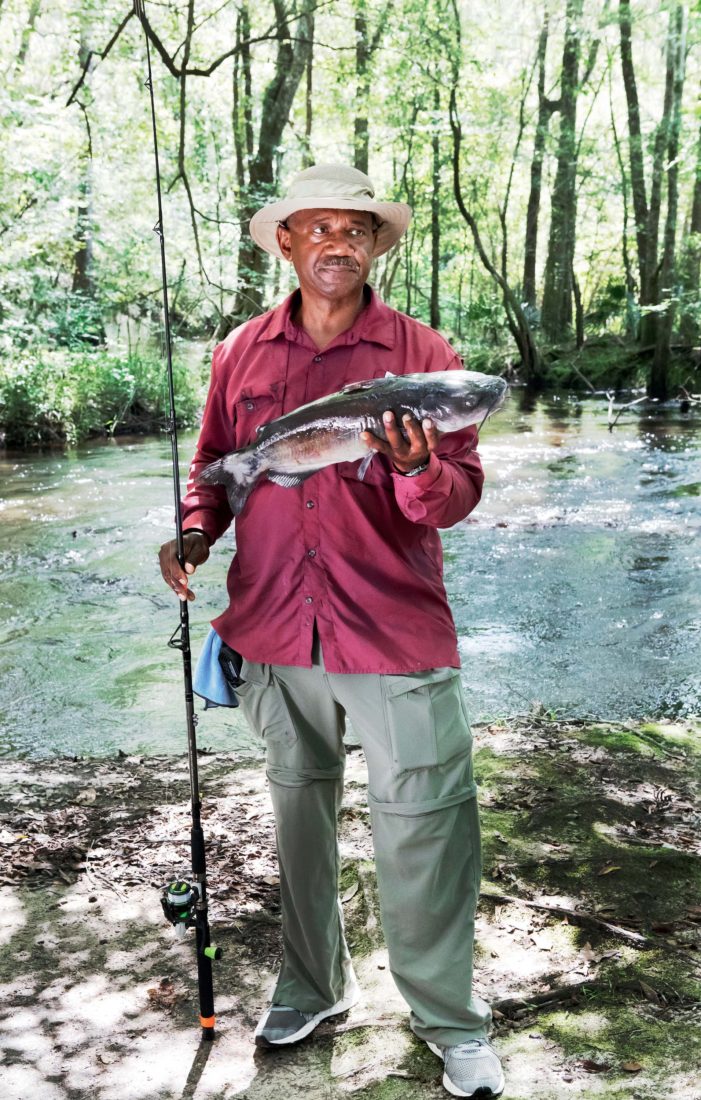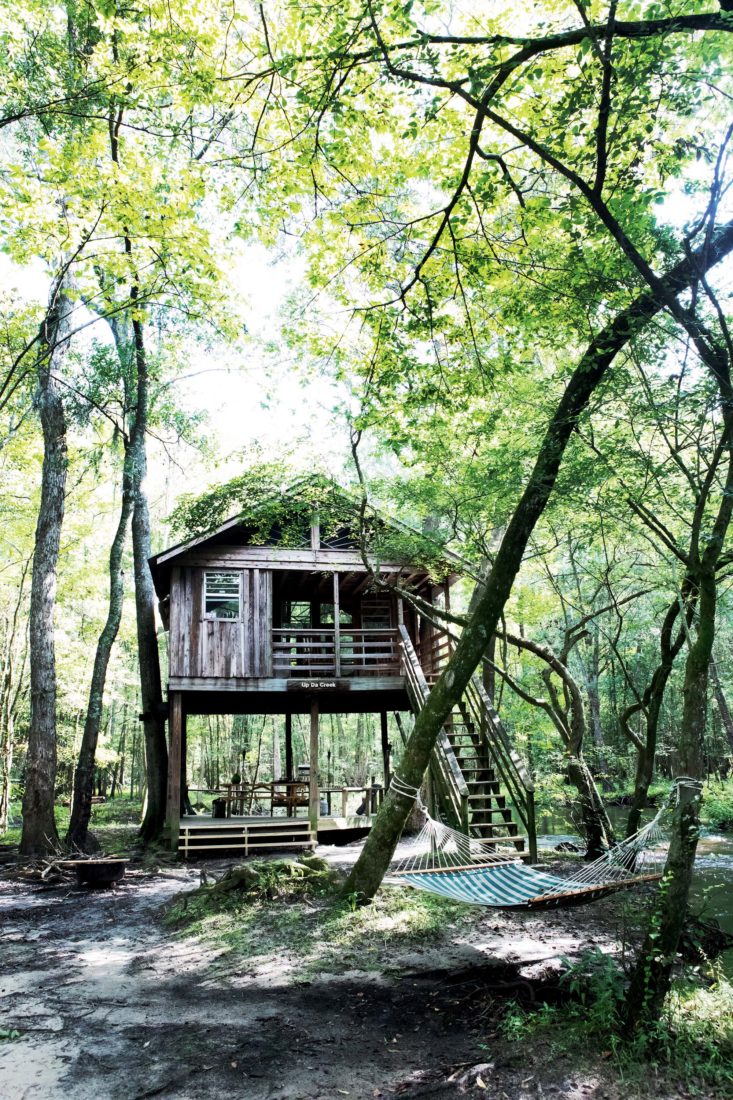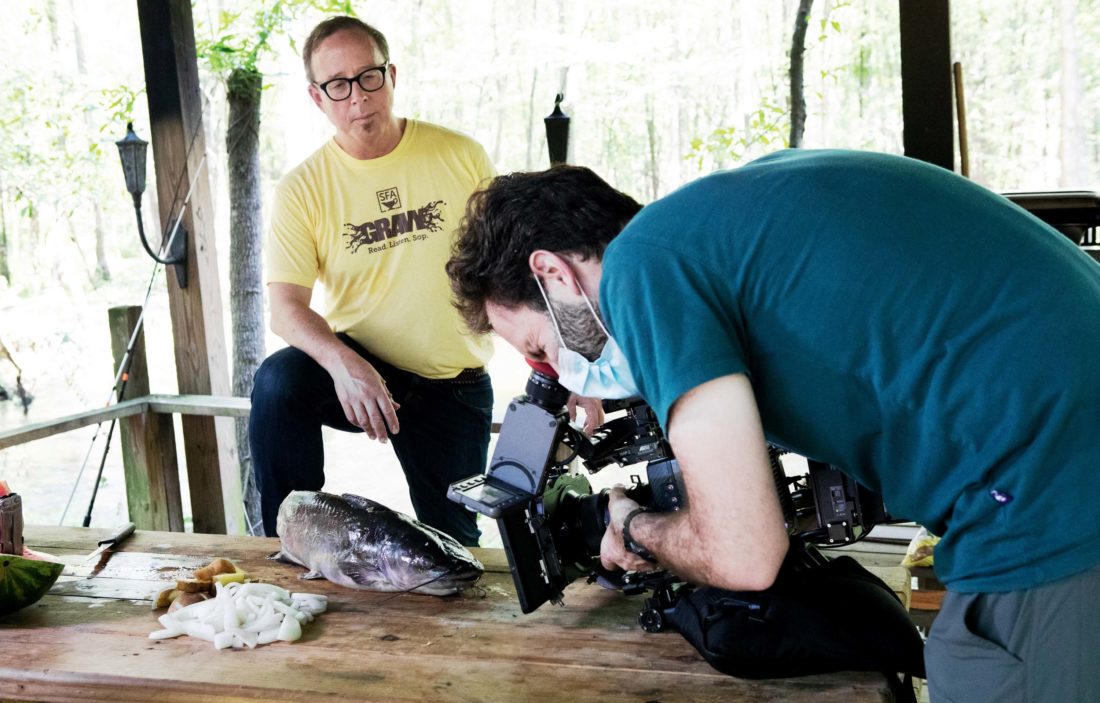John T. Edge and Wright Thompson are lost. For almost an hour now they and their director, Tim Horgan, have been driving around the Edisto River not far from Bowman, South Carolina, peering out the window.
“Is that it?” Thompson asks.
Nope. It’s just another sandy cut-through.
They’re on the hunt for Squirrel Road, a dirt lane where they were told they might find some old fish camps, and even though they’re following written directions—scrawled onto the top of a Styrofoam take-out box by a cook they just met in Orangeburg—Squirrel Road has yet to appear. No one seems too concerned, though, because for Edge and Thompson, cocreators of the food and culture show TrueSouth—which will begin airing its third season on the SEC Network and its parent company, ESPN, this winter—getting lost in the South is part of the process.
“Making this show gives me permission to wander,” says Edge, TrueSouth’s host as well as a four-time James Beard Award–winning writer and Garden & Gun contributing editor. “Before, I was just one guy with a notepad, but now we’re a team of wanderers.”
The SEC Network picked up TrueSouth in 2018 after Edge and Thompson, a senior writer for ESPN, dreamed up the show over cheeseburgers at Handy Andy, a counter-service restaurant in Oxford, Mississippi, where both live. “It’s a tight formula,” Edge says. “We pick two restaurants in one place, set them in conversation with each other, and in doing so tell a story about that place and in turn about the South.”
From a Greek restaurant in Bessemer, Alabama, to a Peruvian café inside a gas station in Athens, Georgia, Edge and Thompson have used this formula to explore distinctive corners of local food cultures throughout the region and—more important to the soul of the show—how those restaurants and the people working in them inform their larger communities.
“It’s a thought experiment about the South,” says Thompson, reflecting the unrelenting curiosity at the heart of TrueSouth, a trait that sets it apart from other shows that have covered similar geographic turf.

“Over a long period of time, a lot of TV shows have gotten the South wrong,” Edge says, emphasizing what he sees as a troubling pattern of romanticizing the region’s past. Not only does this exercise do the South a disservice, he argues, but it also misses the most vital characteristics of the region today. “On TrueSouth, we’re not trying to preserve anything,” he says. “We’re just trying to catch it in motion. To make a document of the South in real time.”
In addition to a consistent focus on the South’s immigrant cultures and the dynamic ways they continue to shape the region, local musical acts often make appearances, including Alabama’s St. Paul & the Broken Bones, and this season, the South Carolina band Ranky Tanky. And while the show has always had what Edge calls a “handmade” quality, the newest season is more personal than ever, in part because of the pandemic and the increase in home cooking that resulted. This is why they’re looking for Squirrel Road.

“It’s this mythical thing in my family,” Edge says of the catfish stew he remembers his mother cooking in a fish camp just like the ones he’s seeking out, and he’s determined to shoot an episode in which he remakes it.
“There it is!” one of them finally says.
Sure enough, a sign at the edge of a dirt lane reads SQUIRREL ROAD. It looks like just an opening into a bundle of scraggly live oaks, a path to the unknown. Perfect. They turn onto it at once, raising a small dust cloud, and barrel into the haze.








